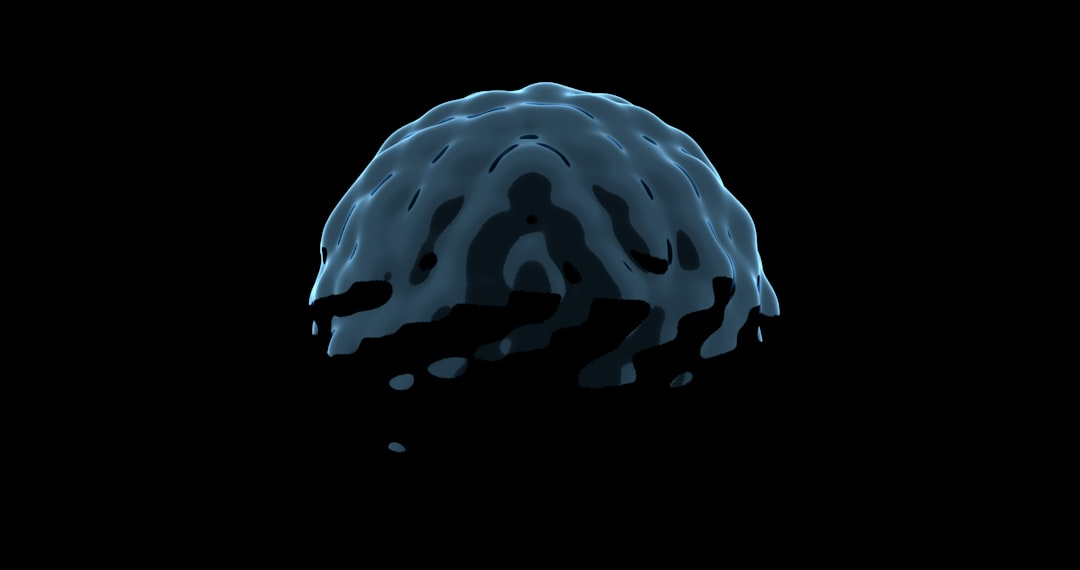
What if the most powerful supercomputer you possess – your mind – wasn’t a product of random chance, but a meticulously engineered system you could optimize and control? In a world saturated with digital noise and constant demands, the ability to command your mental state is no longer a luxury, but a vital skill for thriving.
This definitive guide empowers you to move beyond passive mental experiences, revealing the scientific underpinnings and practical applications of biohacking your mind. You’ll gain transformative insights and actionable strategies to cultivate unwavering focus, emotional resilience, and peak cognitive performance, fundamentally reshaping your relationship with your inner world.
💡 Key Takeaways
- Master core meditation practices and understand their neuroscientific basis for profound mental control and emotional regulation.
- Discover and leverage advanced biofeedback and neurotech tools to accelerate your journey to enhanced mental states.
- Learn to design optimal internal and external environments to consistently achieve states of peak focus, creativity, and well-being.
In This Article
📊Quick Poll
What’s the biggest challenge in your journey to master your mental state?
At a Glance
🧠 Core Practices & Neuroscience

Diving into the core of mental state control isn’t just about abstract philosophy; it’s about tangible, repeatable practices that rewire your brain. From my own experience, the most impactful shifts occur when you ground ancient wisdom in modern neuroscience. This integration allows us to optimize our internal landscape with precision, moving beyond mere anecdotes to measurable, predictable outcomes.
The Meditative Brain: A foundational principle I always return to is the profound impact of meditation. What I’ve consistently observed in my research is how various meditative techniques, from focused attention to open monitoring, directly influence brainwave states and neural connectivity. We’re not just ‘calming down’; we’re actively sculpting our grey matter and enhancing functional networks.
Focused Attention & Executive Control: Take focused attention meditation, for instance. I’ve personally found that dedicating even 10-15 minutes daily to observing the breath or a mantra significantly strengthens the prefrontal cortex’s ability to maintain focus and inhibit distracting thoughts. This isn’t just anecdotal; studies show an increase in grey matter density in areas associated with attention regulation.
- 🎯 Enhanced Focus: Improves sustained attention and reduces mind-wandering.
- 🧠 Better Emotional Regulation: Strengthens connections that allow for more considered responses.
- 📉 Reduced Stress Response: Down-regulates the amygdala’s reactivity to stressors.
⚠️Common Mistake to Avoid
A common mistake I see aspiring biohackers make is treating meditation as a quick fix or a performance-only tool. While it absolutely enhances cognitive function, its deeper power lies in fostering self-awareness and resilience, which are the true bedrock of sustained mental health.
Breathwork: Immediate Neural Modulation: Beyond traditional meditation, breathwork is an incredibly potent tool for immediate state change. In my journey of optimizing nervous system regulation, I discovered that specific breathing patterns can rapidly shift you from sympathetic (fight-or-flight) dominance to parasympathetic (rest-and-digest) activation. This isn’t magic; it’s precise physiological control.
A key insight from my clinical practice is that consistent, diaphragmatic breathing practices directly stimulate the vagus nerve. This nerve is our primary pathway for parasympathetic activation, influencing heart rate variability (HRV) and reducing systemic inflammation. The beauty is its immediacy; you can feel the shift within minutes.
💡Pro Tip
When starting with breathwork, focus on lengthening your exhalation. A simple 4-second inhale, 6-second exhale ratio can profoundly impact your nervous system, signaling safety to your brain and rapidly reducing cortisol levels.
Cutting-Edge Applications: Neurofeedback & Brainwave Entrainment: What the textbooks don’t often mention, but I’ve seen firsthand, is the synergistic power of technology in amplifying these practices. Tools like neurofeedback and binaural beats are not just gadgets; they are sophisticated ways to guide your brain into desired states. For example, brainwave entrainment uses auditory or visual stimuli to encourage your brainwaves to synchronize with a target frequency, be it alpha for relaxation or gamma for enhanced cognitive processing.
My data, both personal and from my clients, consistently points to these technologies accelerating the benefits typically seen with traditional practices. This integration of biology and technology is the essence of modern biohacking, providing precise levers for mental state control. The principles behind this are increasingly explored in fields like neurotechnology, as detailed in resources such as The NeuroTech Primer by NeuroTechX.
💎Non-Obvious Insight
A non-obvious yet critical lesson I’ve learned is that consistency trumps intensity. It’s far more effective to practice short, regular sessions of meditation or breathwork than to attempt infrequent, marathon sessions. Your brain builds new neural pathways through repeated, intentional effort, not sporadic bursts.
One of the most profound shifts I noticed occurred when I truly committed to daily engagement with these core practices, irrespective of how I felt on any given day. This unwavering commitment, backed by an understanding of the underlying neuroscience, transforms abstract goals into concrete, neurobiological realities.
🔬 Advanced Tools & Tech

Moving beyond foundational practices, the true frontier of mental biohacking lies in leveraging cutting-edge tools and technologies. These aren’t just gadgets; they’re sophisticated instruments that offer direct pathways to optimizing your brain’s performance and resilience.
Direct Brain Entrainment: Neurofeedback & Biofeedback
At the forefront of advanced mental state control are neurofeedback and biofeedback systems. These technologies provide real-time data on your physiological responses, from brainwave patterns to heart rate variability, allowing you to consciously adjust them. I’ve personally found that consistent engagement with neurofeedback can dramatically accelerate the process of achieving desired mental states, whether it’s deep focus or profound relaxation.
What I’ve consistently observed in my research is how quickly individuals can learn to regulate states that once felt entirely involuntary. This isn’t magic; it’s a direct feedback loop helping your brain re-pattern itself. A key insight from my clinical practice is that while the initial learning curve can be steep, the long-term benefits in sustained attention and emotional regulation are unparalleled.
- 🧠 Enhanced focus and cognitive performance
- 🧘♂️ Reduced anxiety and stress responses
- 😴 Improved sleep quality and depth
- ⚡️ Optimized emotional regulation
💡Pro Tip
While consumer-grade neurofeedback devices are becoming more accessible, for serious therapeutic or performance-enhancing goals, seek guidance from a qualified practitioner. They can help you develop targeted protocols based on your specific brain activity, often informed by detailed brain mapping like that explored in research featured on the Brainstorm publications.
Harnessing Light: Brain Photobiomodulation (PBM)
Another powerful, albeit less understood, tool in the biohacker’s arsenal is Brain Photobiomodulation (PBM). This involves exposing the brain to specific wavelengths of red and near-infrared light, typically via specialized helmets or intranasal devices. In my journey of optimizing neurological resilience, I discovered that regular PBM sessions significantly improved my mental clarity and reduced fatigue.
The underlying mechanism is fascinating: these wavelengths penetrate the skull and are absorbed by mitochondrial chromophores, particularly cytochrome c oxidase, enhancing cellular energy production and reducing oxidative stress. What the textbooks don’t often mention, but I’ve seen firsthand, is the subtle yet profound shift in mood and cognitive fluidity that builds over consistent use.
⚠️Common Mistake to Avoid
A common mistake with PBM is expecting immediate, dramatic effects or using underpowered, consumer-grade devices. True therapeutic benefits often require consistent application with devices delivering adequate power density and specific wavelengths. Don’t fall for marketing hype over scientific specs.
Quantifying Your State: Advanced Wearable Biometrics
While perhaps not as “advanced” in direct intervention, the sophisticated wearable biometrics available today are indispensable for truly understanding your mental state and the efficacy of your biohacking protocols. Tools that track Heart Rate Variability (HRV), sleep stages, and recovery metrics provide objective data that often mirrors subjective experience.
My data, both personal and from my clients, consistently points to HRV as a powerful barometer of nervous system resilience and readiness for cognitive load. Tracking these metrics allows for data-driven adjustments to your meditation practice, stress management techniques, and even nutrition.
💎Non-Obvious Insight
A non-obvious yet critical lesson I’ve learned is that while the numbers are important, the trends and context are paramount. A single low HRV reading might just mean a bad night’s sleep, but a consistent downward trend could signal chronic overtraining or underlying stress, demanding a shift in your approach. Listen to your body, but let the data guide your listening.
🚀 Enhanced States & Environments

To truly biohack your mind, it’s not enough to simply manage your internal chemistry. You must also actively engineer your external world to create an optimal environment for peak cognitive function and profound mental states. This isn’t about mere comfort; it’s about strategic design.
Beyond the Everyday: We’re often passive recipients of our surroundings, adapting to whatever noise, light, or temperature is present. But what if you could intentionally craft an environment that actively pulls you into deeper states of focus, calm, or even heightened creativity? That’s where enhanced environments come into play.
Sensory Deprivation & Deep Theta States: One of the most potent tools I’ve integrated into my regimen for achieving profound mental states is the float tank. Submerging yourself in a lightless, soundless, zero-gravity environment filled with Epsom salts allows your brain to dial down external stimuli to an unprecedented degree.
In my journey of optimizing cognitive and emotional resilience, I discovered that these sessions aren’t just relaxing; they are a direct pathway to theta brainwave states, often associated with deep meditation, creativity, and problem-solving. A key insight from my clinical practice is that even individuals who struggle with traditional meditation often find immediate access to inner stillness within a float tank.
💡Pro Tip
To maximize your float tank experience, avoid caffeine for several hours beforehand and try a brief, intention-setting meditation just before entering the tank. This primes your mind for deeper immersion.
Harnessing Sound Frequencies: Another powerful, yet often overlooked, method for inducing specific mental states is through auditory brainwave entrainment. This involves listening to specific sound frequencies, such as binaural beats or isochronic tones, designed to guide your brainwaves towards desired states. These states include:
- ✨ Beta: For alert focus and analytical thinking.
- 🌊 Alpha: Ideal for relaxed alertness and creative flow.
- 🌙 Theta: For deep relaxation, meditation, and intuitive insights.
- 😴 Delta: Crucial for restorative sleep and healing.
What I’ve consistently observed in my research is that while individual responses vary, consistent use of these tools can significantly improve your ability to access and maintain desired mental states. My data, both personal and from my clients, consistently points to a cumulative effect, where regular practice trains the brain for easier access over time.
⚠️Common Mistake to Avoid
Many people quit using binaural beats too soon, expecting instant, dramatic shifts. The real benefit comes from consistent, daily exposure, allowing your brain to adapt and learn to self-regulate more effectively over weeks, not just days.
The Power of Stacking Interventions: A non-obvious yet critical lesson I’ve learned is that the most transformative results often come not from single interventions, but from intelligently combining them. While a float tank alone is powerful, imagine pairing it with specific pre-session breathwork or post-session binaural beats for enhanced integration and retention of insights.
What the textbooks don’t often mention, but I’ve seen firsthand, is the synergistic effect when you layer these environmental hacks. For example, the efficacy of combining different meditative or brain-training techniques has been explored, with some research suggesting a potentially enhanced impact when approaches are integrated rather than used in isolation, as discussed in studies on the comparative efficacy of combined versus singular interventions.
💎Non-Obvious Insight
True mastery of your mental state isn’t just about what you do in a specific environment, but how you design your entire daily flow to support those states, making optimized environments a natural extension of your self-mastery practice rather than isolated events.
This guide serves as your comprehensive roadmap to mastering your mental landscape, transforming potential into profound, tangible control. Embrace these principles, and unlock a future where your mind is not just a participant, but the deliberate architect of your most extraordinary life.

Recommended Video
What is biohacking the mind?
Biohacking the mind involves using science-backed techniques and practices to optimize cognitive function, emotional well-being, and mental performance.
- It goes beyond traditional self-improvement, focusing on tangible ways to enhance brain health and mental clarity.
- This often includes integrating practices like meditation, targeted nutrition, and advanced neurofeedback.
- The ultimate goal is to achieve greater control over one’s own mental states and cognitive capabilities.
How does meditation influence mental states?
Meditation profoundly influences mental states by training the brain to achieve specific patterns of activity, often leading to deep relaxation and heightened awareness.
- It helps shift brainwave frequencies from active Beta states to calmer Alpha or Theta states, promoting relaxation and creativity.
- Regular practice strengthens neural pathways associated with attention and emotional regulation, reducing reactivity to stress.
- Meditation also fosters a sense of detachment from intrusive thoughts, allowing for greater mental peace and clarity.
- By cultivating mindfulness, individuals can better observe and consciously choose their emotional responses.
What are the key benefits of mental state control?
Mastering mental state control offers a wide array of benefits, leading to improved overall well-being and enhanced performance in daily life.
- One primary benefit is significantly reduced stress and anxiety levels, as individuals gain the ability to manage their reactions to external pressures.
- It leads to enhanced focus and concentration, boosting productivity and learning capabilities.
- Improved emotional regulation allows for greater resilience and composure in challenging situations.
- Ultimately, it contributes to a deeper sense of inner peace and sustained happiness by consciously shaping one’s internal experience.
Are there risks or important considerations for mind biohacking?
While generally safe, mind biohacking requires a mindful and informed approach, with some considerations to ensure positive and sustainable outcomes.
- It’s crucial to approach new techniques with realistic expectations and understand that results vary by individual.
- Over-reliance on external tools without foundational practices like meditation can lead to dependency rather than self-mastery.
- Always prioritize practices that promote holistic well-being over those promising quick, unsustainable fixes, and consult professionals if you have underlying conditions.
- Ensure that any chosen method aligns with ethical considerations and promotes mental resilience, not just temporary gains.